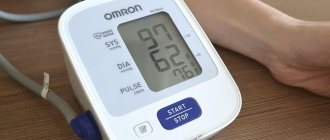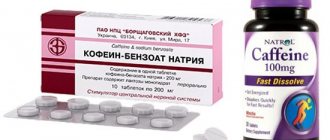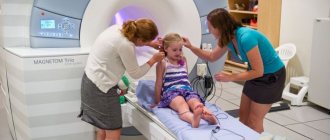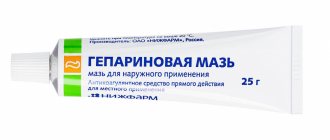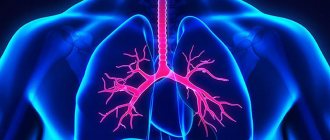An excess amount of cerebrospinal fluid in the skull compresses the brain, as a result of which a person experiences severe headaches, tissue swelling, weakness, fatigue and dizziness. To relieve this condition, there are pills for intracranial pressure.
They are indicated for patients who have been diagnosed with this by a neurologist. Comprehensive treatment based on medications, physiotherapy, massage, and other procedures will help you get rid of significant discomfort. Today we will talk about tablet medications designed to relieve symptoms of ICP (intracranial pressure).
When should you take pills?
To protect the brain from injury and shock, it is surrounded by cerebrospinal fluid (CSF), located in the area of the ventricles. Intracranial pressure is the accumulation of excessive amounts of cerebrospinal fluid in the skull, which creates additional pressure on the brain. This condition is fraught with the development of complications and requires immediate initiation of antihypertensive therapy.
Impaired circulation of cerebrospinal fluid leads to the development of the following symptoms, when they occur, you should begin taking medications to reduce intracranial pressure:
- severe headaches accompanied by nausea and gag reflex;
- blurred vision in the eyes, visual disturbances;
- fainting;
- manifestations of vegetative-vascular dystonia (dizziness, weakness, sweating, agitation);
- loss of performance;
- dark circles under the eyes.
At the same time, a person may experience pain in the stomach and heart. This condition cannot be ignored; you must consult your doctor to prescribe drugs that stabilize intracranial pressure.
Diuretics
Drugs for intracranial pressure with a diuretic effect involve achieving a diuretic effect, due to which the volume of cerebrospinal fluid in the cranium will decrease, and the signs of increased ICP will subside. The rate of excretion of urine and liquid with salts increases due to inhibition in the renal tubules, due to which tissue swelling subsides.
Diuretics are divided into saluretics and osmotic agents. Osmotic drugs are designed to increase pressure in the renal tubules, as a result of which fluid will be excreted many times faster. Saluretics include loop diuretics (Furosemide) and carbonic anhydrase inhibitors (Diacarb, Acetazolamide).
Furosemide is the most common diuretic
Drugs that improve blood circulation in brain tissue
The main reason why intracranial pressure increases in adults is spasm of blood vessels as a result of their sudden compression and insufficient blood supply. To eliminate the symptoms of intracranial pressure, it is necessary to take drugs with the opposite effect - dilating the capillaries of the brain and accelerating the blood supply to brain cells.
Doctors recommend that patients take the following medications:
- Phenotropil;
- Nootropil;
- Encephabol;
- Sermion;
- Actovegin;
- Piracetam.
This list of tablets is not suitable for independent use at home; such drugs should be prescribed exclusively by a doctor, prescribing the frequency and dosage for each specific patient individually. Means that can be used independently with caution are Aspirin, Pantocalcin (Pantogam), Glycine and Gingko Biloba. In this case, you need to thoroughly study the instructions for use and not exceed the recommended dosages.
Examination and treatment
Intracranial hypertension is an increase in pressure exerted by cerebrospinal fluid moving along the brain pathways.
This pathology is included in the list of the most common brain diseases and is a dangerous disease that has a destructive effect on its structures. More often, hypertension is a secondary disease that develops against the background of various factors, including traumatic or oncological etiology. According to statistics from neurologists around the world, representatives of the stronger sex are more susceptible to intracranial hypertension, although in children it is diagnosed with equal frequency in both boys and girls.
Important: high blood pressure can be provoked not only by cerebrospinal fluid, but also by arterial blood or the substrate of a brain tumor.
Get diagnosed with intracranial hypertension at Clinic No. 1:
- Fundus examination
- Ultrasound of cerebral vessels
- X-ray of the head
- EEG
- Angiography
For one-time payment for services - 20% discount
Call
Beta blockers
Selective beta blockers are intended specifically for the treatment of intracranial pressure. Some of them, for example, Corinfar and Tenorica, have a prolonged effect, they need to be drunk only once every 24 hours, so this form is convenient for older people. List of effective drugs from this group:
- Nebivolol;
- Metoprolol;
- Atenolol;
- Betaxolol;
- Bisoprolol.
Drugs from the beta blocker group are identified by names ending with the syllable “lol”. They should be taken on the recommendation of a doctor, in the required dosage and with the prescribed frequency.
Nootropics
Tablets for high intracranial pressure from the group of nootropic drugs help improve brain activity, normalize metabolic processes in tissues, and increase the ability of brain cells to remain without oxygen for a long time. Such medications help stimulate memory, concentration and attention, increase intelligence, ability to remember and process information.
Here is a list of effective nootropics used to reduce ICP and relieve signs of abnormal brain function:
- Cortexin;
- Cerebrolysin;
- Microhydrin;
- Piracetam;
- Actovegin.
Nootropics - drugs for the complex treatment of intracranial hypertension
Impaired blood supply to the brain occurs due to stress, infectious diseases, osteochondrosis (in particular, the cervical spine) and other negative factors. In addition to taking nootropic drugs, measures should be taken to eliminate these provoking factors, since an inadequate blood supply to the brain can not only disrupt vital processes in the body, but also increase the pressure of the cerebrospinal fluid inside the skull. Over time, the pathology can become chronic and cause serious consequences.
Symptoms of intracranial pressure
You can suspect a problem based on the following signs:
- headache;
- nausea and vomiting in the absence of gastrointestinal diseases;
- increased fatigue;
- irritability;
- changes in blood pressure, pulse rate;
- decreased libido.
Headache is the main symptom of liquor-hypertensive syndrome. Patients note the dependence of pain on body position and time of day. For many people, headaches begin to hurt more severely in the evening and at night, when a person is in a lying or reclining position. In this case, the production of cerebrospinal fluid increases, and its outflow worsens, which increases compression.
There is a feeling of fullness, pressure from the inside, which is localized in the fronto-parietal areas. The patient complains of a feeling as if something is pressing on the eyes from the inside, and blurred vision occurs. This feeling intensifies when the eyeballs move. When examining the fundus, the doctor will note swelling of the optic nerve - one of the main signs of increased intracranial pressure.
Because of the headache, a person feels bouts of nausea, but after vomiting, the state of health does not improve. In severe cases, the disease is accompanied by fainting and confusion.
In the chronic form of the disease, the quality of life decreases significantly. The patient becomes emotionally labile, stress resistance and performance decrease. Many people feel worse when the weather changes, that is, they develop increased meteosensitivity. It manifests itself as headaches and dizziness, sleep disturbances, fluctuations in blood pressure, muscle and joint pain, and general malaise.
Painkillers for headaches
What medications should I take to relieve the main symptom of increased intracranial pressure – headache? It can be diffuse, spreading over the entire area of the head, radiating to the temples and the back of the head. To reduce pain, take the following anesthetic drugs:
- Nimesil is a drug based on nimesulide, a substance with anti-inflammatory and antipyretic effects. The medicine effectively relieves pain for 10–12 hours in a row, and the effect begins 1–2 hours after administration;
- Ketoprofen - to soothe pain that occurs with increased intracranial pressure, you should take 1 tablet with a dosage of 50 mg up to 2-3 times a day;
- Ketorol is a tablet with a powerful analgesic effect that allows you to quickly and permanently get rid of discomfort.
Taking Askofen tablets based on caffeine, paracetamol and acetylsalicylic acid gives a good effect. But they slightly increase blood pressure, so it is recommended to drink them for people whose blood pressure levels are low or within normal limits. You need to understand that without appropriate therapy aimed at reducing the amount of cerebrospinal fluid in the meninges, it is impossible to achieve recovery with one dose of painkillers.
Drug treatment
Treatment tactics depend on the cause that provoked the increase in indicators, as well as on the severity of the disease. Conservative therapy involves the complex use of drugs that affect all pathological mechanisms, so taking one drug will not help get rid of increased intracranial pressure.
The specialist prescribes medications from various pharmacological groups that affect certain pathological mechanisms
Drug treatment is prescribed to prevent the development of complications and when symptoms of increased intracranial pressure increase, namely:
- paroxysmal severe headache;
- visual impairment;
- nausea accompanied by vomiting;
- fainting;
- severe weakness;
- changes in blood pressure;
- heart rhythm disturbances.
Increased intracranial pressure leads to disruption of the mechanisms of adaptation to external stimuli, so the slightest nervous or mental stress leads to intense headaches.
Most diseases that provoke an increase in cerebral pressure in an adult can be treated well with medications, which makes it possible to avoid surgical intervention. Patients are prescribed complex treatment with drugs whose action is aimed at normalizing cerebral circulation and activating the processes of removing excess fluid from the body.
Vasodilator medications
The therapeutic effect of this group of drugs is to expand the vascular lumen, which reduces pressure, improves the outflow of cerebrospinal fluid and restores cerebral circulation. To quickly stabilize cerebral pressure values, intramuscular injection of nicotinic acid is used in a dosage of 2 to 4 ml. Instant expansion of the lumen of blood vessels is accompanied by redness of the skin with a characteristic tingling sensation.
The following drugs can be used to eliminate cerebral hypertension:
- Sermion (reduces vascular resistance, improves cerebral hemodynamics).
- Cavinton (promotes better outflow of cerebrospinal fluid, accelerates metabolic processes in the brain).
- Cinnarizine (lowers the tone of vascular smooth muscles).
Corticosteroids
With increased intracranial pressure, corticosteroids are prescribed, which reduce the production of cerebrospinal fluid in the ventricles of the brain, thereby reducing its volume in the cavities of the brain. They are indicated for severe inflammation and a high risk of cerebral edema.
The most used representatives of the group:
- Dexamethasone (has anti-inflammatory, antiallergic effect).
- Prednisolone (inhibits the inflammatory process, has antiallergic properties).
Diuretics
It is the most popular group of medications among tablet forms for lowering intracranial pressure. Diuretics have a pronounced diuretic effect, due to which excess fluid is released, causing an increase in cerebral pressure. So, the following drugs will help normalize the indicators:
- Furosemide and Lasix are used to achieve a rapid therapeutic effect and actively remove sodium from the body.
- Diacarb. Increases the excretion of potassium and sodium ions in urine. The use of the drug for high ICP is associated with inhibition of the enzyme carbonic anhydrase in the ventricles of the brain and a decrease in the secretion of cerebrospinal fluid.
- Glycerol. An osmotic diuretic removes excess fluid from the intercellular space. It is used once, the maximum therapeutic effect is observed after 1.5 hours.
Painkillers
To relieve severe pain caused by high blood pressure, you can take painkillers. Patients are recommended to use combination drugs that, in parallel with the analgesic effect, exhibit an anti-inflammatory effect, preventing the occurrence of migraines. Among them are:
- Ketonal. Suppresses the activity of inflammatory mediators, reduces pain.
- Nimesil. Reveals analgesic, antipyretic and anti-inflammatory effects.
- Treximed. Promotes the expansion of the lumen of blood vessels, eliminates painful manifestations.
Important! Medicines containing amino acids will help relieve the load on the brain. Taking pills can reduce the effects of the negative effects of cerebral hypertension due to the production of hormones, enzymes and proteins. The following tablets prevent the destruction of cellular structures: Cerebrolysin, Glycine, Citrulline.
Preparations containing amino acids
Preparations with amino acids help not only reduce intracranial pressure, but also accelerate the production of vital enzymes and reduce the load on the brain. These drugs include Glycine - it improves metabolic processes (metabolism in tissues), has an unexpressed sedative and hypnotic effect, and makes memory sharper.
When should you take Glycine:
- in stressful and conflict situations;
- with decreased concentration, attention and performance;
- during the recovery period after a head and brain injury;
- when under difficult conditions of physical and mental labor.
To improve brain function and get rid of regular headaches, the doctor can prescribe the drugs Cerebrolysin and Citrulline simultaneously with Glycine
Preventative measures against the disease
For the purpose of prevention, it is necessary to follow a number of rules:
- eliminate bad habits;
- avoid strong and prolonged stressful situations;
- minimize the risk of traumatic brain injuries when engaging in traumatic sports by using protective helmets;
- periodically undergo a course of massage of the cervical-collar area;
- prevent exacerbation of concomitant diseases such as hypertension, epilepsy, etc.;
- do not lift heavy objects;
- avoid excessive physical activity;
- provide a sufficient amount of potassium-rich foods in your daily diet;
- adhere to a rational daily routine;
- do gymnastics for the neck muscles;
- lead a healthy lifestyle.
These actions are aimed not only at preventing the development of the disease, but also at improving brain function in general. Preventive measures promote proper circulation of cerebrospinal fluid and blood, as a result of which the brain is more fully saturated with nutrients and oxygen.
It is very important to consult a doctor in a timely manner; only with the help of adequate treatment can you get rid of the disease, prevent relapse and the development of serious complications that can be caused by intracranial pressure.
Other drugs
How else to reduce increased intracranial pressure, with the help of what drugs? The following medications are used for this:
- Diacarb. The drug is an analogue of Acetazolamide, also with diuretic properties. Diacarb has a hypotensive effect, a diuretic effect, reduces intracranial pressure, but this increases the risk of urinary excretion of magnesium, potassium, sodium and phosphates. Therefore, you need to take the tablets in combination with Panangin - it does not allow elements to be washed out of the body.
- Glycerol. The glycerol-based drug Glycerol has dehydrating properties. Once in the circulatory system, the active substance of the product helps remove most of the stagnant fluid. However, Glycerol molecules are similar to water molecules, so the drug does not cause dehydration and lowers intracranial pressure quickly and effectively.
- Treximed. The drug belongs to the group of drugs for migraine relief. It simultaneously relieves acute pain and lowers ICP, ridding the skull of excessive amounts of cerebrospinal fluid. The drug is not suitable for self-administration; it should be prescribed by a doctor in accordance with the clinical picture, age and weight of the patient.
Anti-anxiety drugs and antidepressants are also widely used in the treatment of intracranial hypertension. To calm the excited nervous system and reduce the signs of ICP, you can take tincture of Peony, Motherwort, Valerian or tablet preparations Novo-Passit, Persen, Magne B6.
Before starting treatment for the disease, it is necessary to undergo an examination by a neurologist and confirm the diagnosis of intracranial pressure. It is pointless to take medications on your own, since many of them have a lot of side effects, and if the diagnosis is not specified, they can only cause harm. The combination of medications is also dangerous, so only a doctor should prescribe therapy.
Intracranial hypertension: diagnosis
Types of pathology diagnostics include:
- measuring intracranial pressure by inserting a needle into the fluid cavities of the skull or spinal canal with a pressure gauge attached to it.
- tracking the degree of blood filling and dilation of the veins of the eyeball. If the patient has red eyes, that is, the eye veins are abundantly filled with blood and are clearly visible, we can talk about increased intracranial pressure;
- ultrasound examination of cerebral vessels;
- magnetic resonance and computed tomography: the expansion of the fluid cavities of the brain is examined, as well as the degree of rarefaction of the edges of the ventricle;
- conducting an encephalogram.
